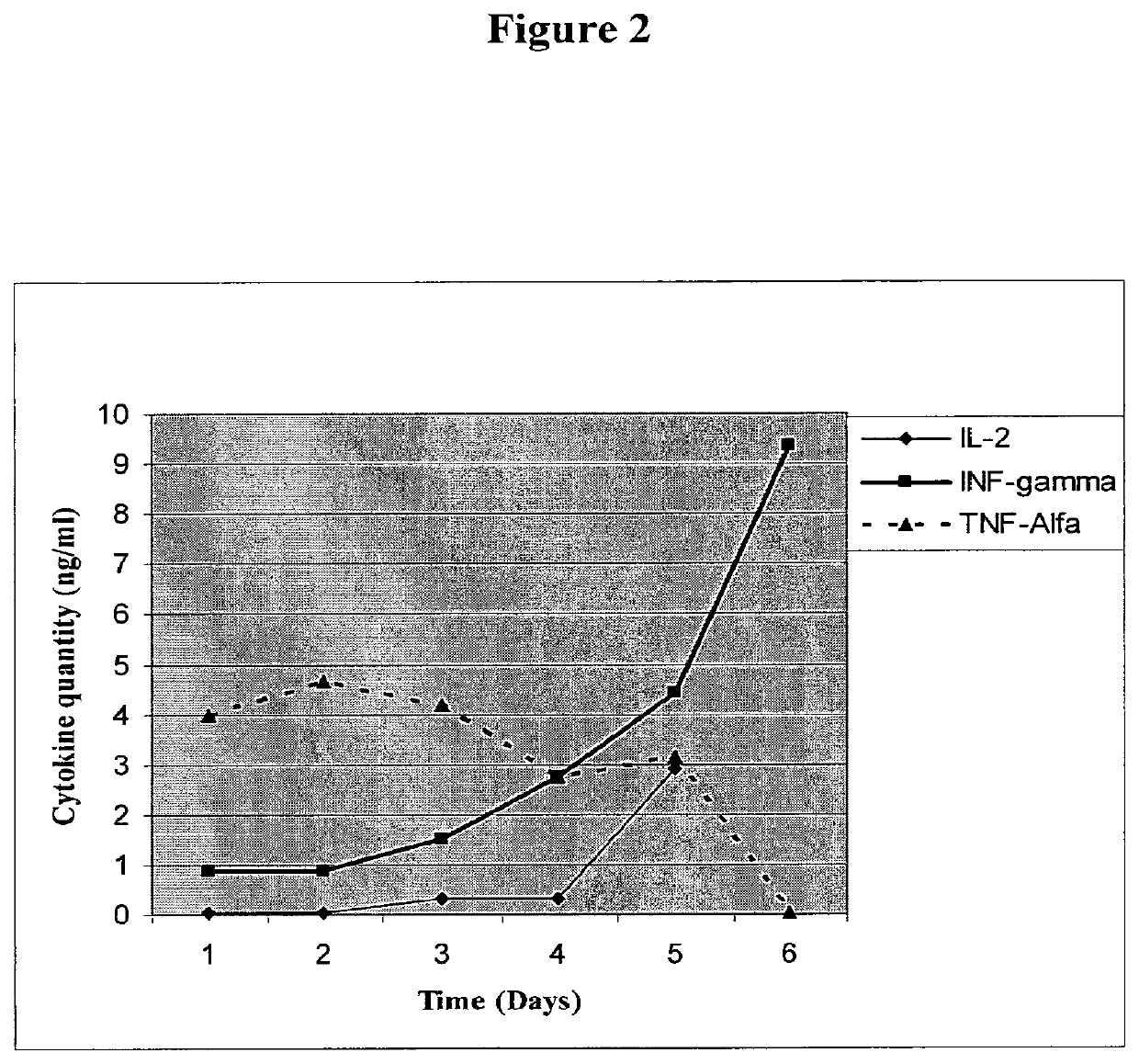Antigen specific multi epitope vaccines
a vaccine and antigen technology, applied in the field of cancer peptide vaccines, can solve the problems of limiting the dose that can be administered, difficult to induce an effective response in cancer patients, low response rate of current chemotherapy regimens, etc., and achieves effective cd4+ t-cell mediated immune response and strong comprehensive response
- Summary
- Abstract
- Description
- Claims
- Application Information
AI Technical Summary
Benefits of technology
Problems solved by technology
Method used
Image
Examples
examples
Materials and Methods
[0161]Preparation of Peptide Pulsed DC
[0162]Human PBMC were separated from buffy coat samples of naive donors using Ficoll UNI-SEPmaxi tube. Separated cells were suspended in RPMI medium supplemented with 10% FCS, L-Glutamine, Sodium Pyruvate, MEM-EAGLE non-essential amino-acids, HEPES and Gentamycin Sulphate (Bet-Haemek Industries, IL) and cultivated for 4 h at 37° C. in a culture dish (Corning 150 mm×25 mm). Adherent cells were collected and cultured for 7 days in serum free DCCM-1 medium supplemented with L-Glutamine, huIL-4 (1000 IU / ml) (Cytolab IL) and GM-CSF-80 ug / ml (Cytolab IL). On day seven floating cells were collected and loaded with 50 ug / ml of examined peptide for 18 h at 37° C.
[0163]Development of ImMucin Specific Enriched T-Cell Clone
[0164]Thawed PBLs underwent 1st stimulation with ImMucin pulsed Autologues DC at a ratio of 20:1 and cultured for 7 days in dedicated T cell Medium. T cell medium contained RPMI medium supplemented with 10% FCS, L-Glu...
PUM
 Login to View More
Login to View More Abstract
Description
Claims
Application Information
 Login to View More
Login to View More - R&D
- Intellectual Property
- Life Sciences
- Materials
- Tech Scout
- Unparalleled Data Quality
- Higher Quality Content
- 60% Fewer Hallucinations
Browse by: Latest US Patents, China's latest patents, Technical Efficacy Thesaurus, Application Domain, Technology Topic, Popular Technical Reports.
© 2025 PatSnap. All rights reserved.Legal|Privacy policy|Modern Slavery Act Transparency Statement|Sitemap|About US| Contact US: help@patsnap.com


